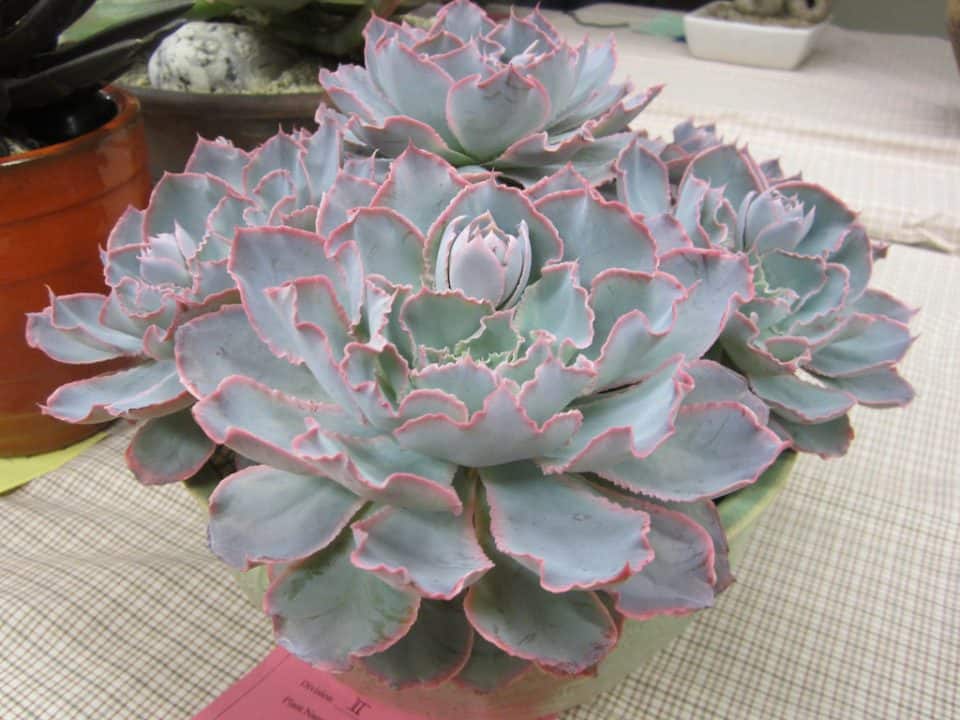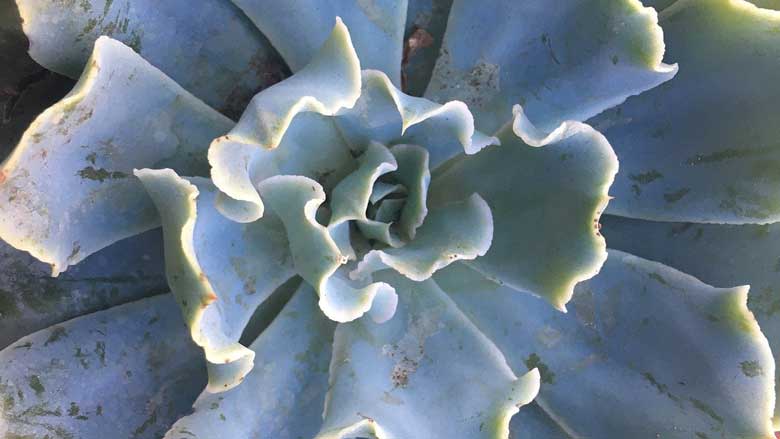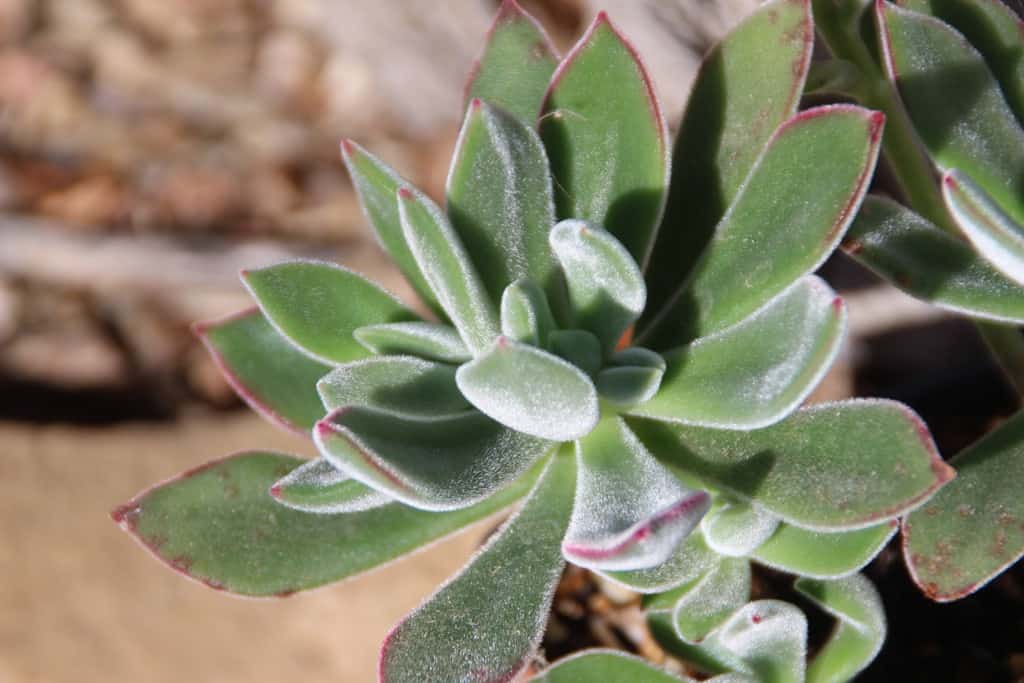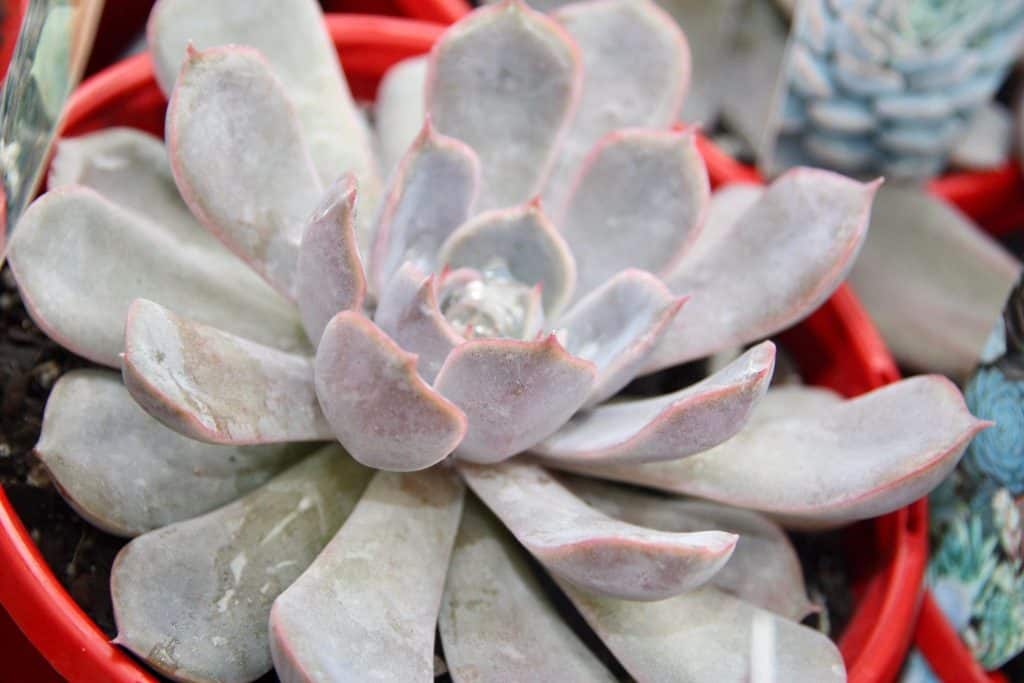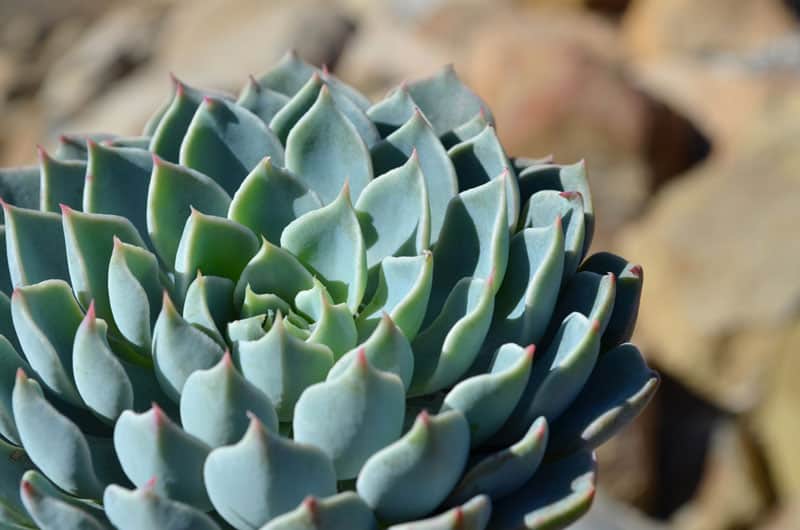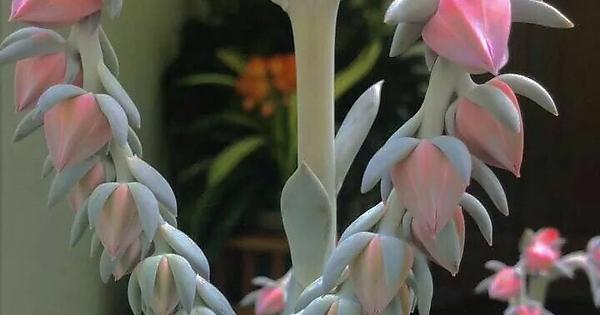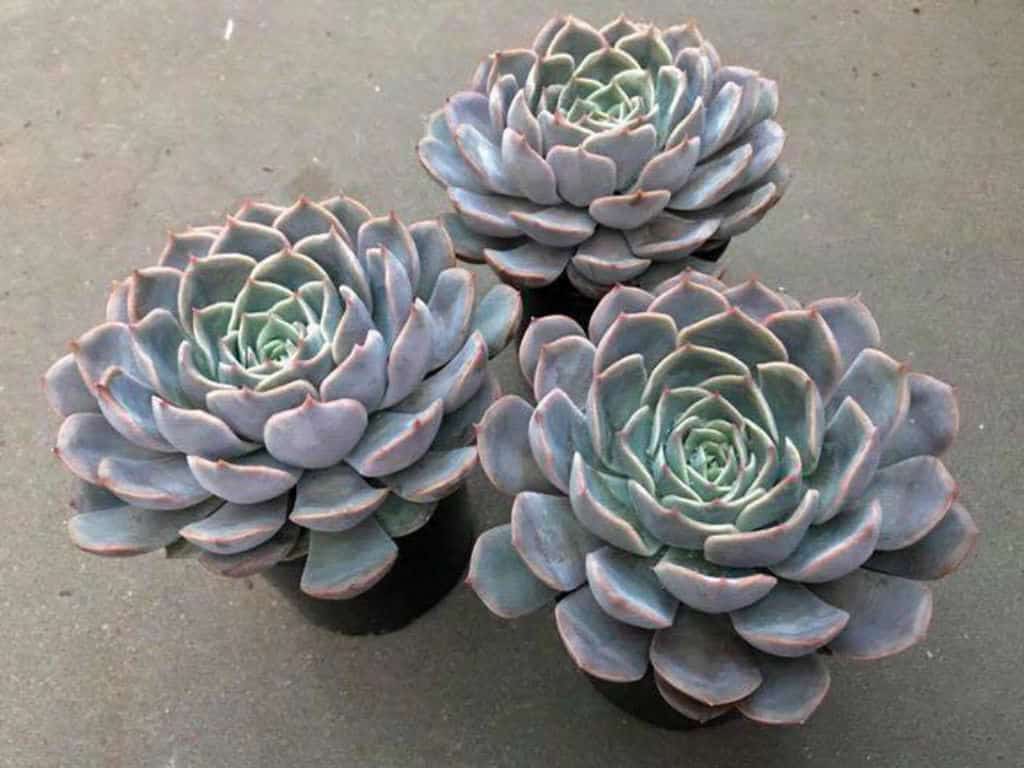Echeveria shaviana, commonly known as Mexican hen plant, echeveria pink frills succulent, Mexican hens and chicks, echeveria pinky, or just Mexican hens succulent, is an attractive houseplant that is easy to grow and maintain, so you can enjoy its beauty all year round. Succulents are drought-tolerant plants, but they do require proper care if you want them to thrive.
The echeveria shaviana pink frills have become popular as an ornamental plant, due to its unique and interesting appearance and colorful leaves and flowers.
Echeveria shaviana pink frills get their name from their light pink and white striped coloration, which makes it stand out in any collection of succulents.
In addition to its attractive appearance, Echeveria shaviana also grows well in most soil types, which makes it perfect for succulent gardens or houseplants that need little care. As with all echeverias, this particular species will do best in an area with good indirect sunlight throughout the day.
Here’s what you need to know about how to water echeveria shaviana (pink frills succulent).
Origin and distribution
Echeveria shaviana is Mexican hens and chicks species of succulent perennial plants in the Crassulaceae family. Often mistaken for Echeveria amoena, it has been moved to other generas in a number of different ways over time.
This popular plant is native to Mexico and Central America, particularly in highlands near volcanoes. Now it is grown in many places around the world including North America. Echeveria shaviana can be found at specialty nurseries and even big box stores such as Walmart, but it is not often seen at garden centers.
The nursery trade calls these plants Mexican hens and chicks because they resemble clumps of little chicks huddling together for warmth. However, unlike a hen with her brood, each baby succulent grows independently. A mature rosette will have offsets that grow off its sides or on top of its leaves like a stack of pancakes. It is easy to see why people call them Mexican hens and chicks!
Echeveria shaviana propagation
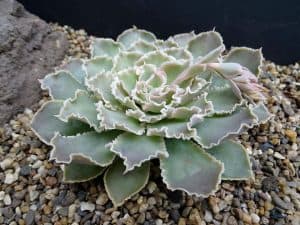
A number of methods can be used to propagate Echeveria shaviana pink frills succulents including cuttings, propagation by leaf- or root-bud, offsets, and grafting. Cuttings are one of the easiest ways to propagate succulents. Leaf cuttings are especially easy. Remove a mature leaf from your succulent and let it callous over for a few days before placing it in well-draining soil.
Also, try propagating your plants from seed for an interesting spin on propagation! You’ll have to wait a while for germination, but you’ll get some really cool results.
You could also take a tip from Mexican hens and chicks: if you want to create more Echeveria shaviana plants, just break off some of its leaves and plant them in their own pot! The same is true with offsets; they will eventually grow into separate plants, so give them each their own container when they reach a certain size.
If you want to go all out, why not try grafting? Grafting is best done during spring when new growth appears on both stock and scion. To do so, carefully remove all but one leaf from each plant and then bind them together with rubber bands or raffia until they heal together.
After a few weeks, cut off any leaves that grow where you don’t want them to grow. You can expect your grafted succulents to take about two years before producing flowers and fruit!
Echeveria shaviana care information
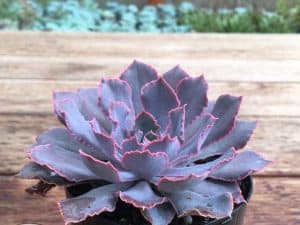
Echeverias are easy to care for, you simply need to be aware of a few things. First, they’re sensitive to cold weather. In the winter months, keep them indoors near a south-facing window where it gets lots of sun.
Second, they don’t like hot summer temperatures; during those months keep them in indirect sunlight and out of direct sunlight as much as possible. You can also use grow lights during summer if needed.
Light requirement
Echeveria shaviana prefers bright light, such as found in an east or west-facing window. A sunny south-facing window is also acceptable. An echeveria succulent can be damaged by direct sunlight, so it’s best to avoid a south-facing window if possible. Also, remember that strong sunlight through a window will be stronger than any lamp you have on hand, so don’t think that one table lamp near your plant will offer enough light—it won’t!
Soil/potting mix
Echeveria shaviana grows best in well-draining soil that is kept evenly moist. They are tolerant of a wide range of soil types, so you can adjust their potting mix to suit your individual needs.
Watering
Echeveria shaviana is a succulent, meaning it doesn’t need much water. When watering, make sure to allow at least one inch of soil to dry out between watering. Echeverias are prone to root rot if they get too much water, so make sure to water them in their container and not in their pot when you do water them.
For example, place your potted echeveria on top of a saucer filled with rocks or pebbles and then add enough water to just cover the bottom of your pot. This will keep any excess water from seeping into your plant’s roots.
Keep in mind that even though they’re drought-tolerant once established, echeverias will still benefit from some regular watering while they’re adjusting to their new home.
It’s also important to avoid overwatering them; if your echeveria has lost its leaves or appears stunted and wilted, it likely means it needs more air circulation around its roots and less water. It should perk up within a few days with good care.
Fertilizer
The best fertilizer for echeverias shaviana is those ones with slow-release properties, meaning it slowly releases nitrogen into your plant over time rather than releasing everything all at once which can cause a nutrient burn. If you’re looking to fertilize a single pot of Echeveria shaviana or multiple pots, look for a fertilizer that has a ratio of 10-10-10.
This means that there are equal amounts of Nitrogen, Phosphorus, and Potassium in each serving. For example, Miracle Grow All Purpose Plant Food has a ratio of 10-10-10 and works great as an echeveria succulent fertilizer as well as other plants like African violets and orchids!
Temperature
The Echeveria genus thrives in temperatures between 60-75 degrees Fahrenheit. This succulent requires high humidity, so mist it every few days, and keep its soil lightly moist but not waterlogged. Keep your Echeveria shaviana in a spot where it receives sunlight for at least four hours per day. Too much light can burn and damage leaves, though—if your plant begins to wilt under higher lighting conditions, move it somewhere darker until it recovers.
Humidity
Growing succulents, cacti, and other desert plants in homes or offices with low humidity can be tricky, but echeverias have a high tolerance for dry air. These drought-tolerant plants are sometimes known as hens and chicks because of their propensity to split up and create new baby plants. If you’re growing your succulents indoors, maintain moderate humidity by misting them regularly. This will keep pests at bay and help prevent rot.
The ideal humidity range is between 40 and 60 percent. If your home or office is particularly dry, you can invest in a humidifier to keep your plants happy. Echeverias are often sold as potted plants at garden centers, but they’re also easy to propagate from cuttings.
Pruning
The general rule is to prune echeverias when they are dormant, either in winter or fall. Pruning will encourage growth and new flowers, though you can prune them at any time of the year. However, if you are shaping your succulents, it is a good idea to let them recover for about 6 months after a big pruning so that they have time to regenerate and grow more roots before being moved into their final location.
If you are transplanting an echeveria from one pot to another, make sure to avoid disturbing its roots during repotting. If you need to remove old leaves from your plant, do so gently with sharp clean scissors.
When to repot
Echeverias are such low-maintenance houseplants, you might not even notice that they need repotting—but every plant has a different lifecycle, and yours might be ready for new soil. On average, Echeverias need to be repotted about once a year.
But if your plant looks especially stressed out or rootbound, it’s time to give it some fresh potting mix. You can also tell when it’s time to repot an echeveria by looking at its leaves: When plants start getting leggy, with long stems and few leaves left on them, it’s probably time for a change of scenery.
Dormancy
Echeveria shaviana is a winter-growing, dormant succulent. That means it will go into dormancy if left in full sun in a warm area; it won’t thrive and can get sunburned. If you want to keep your Echeveria around year-round, make sure to give it enough shade and water so that it stays alive through summer. These special plants are able to survive long periods of drought by storing water in their leaves.
During dormancy, they lose their leaves and store energy for regrowth. Make sure to check on your plant regularly, you don’t want it to burn up from too much sun!
Echeveria shaviana flower & fragrance
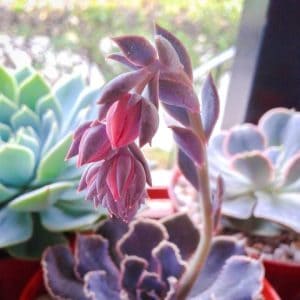
Echeveria shaviana is known for its pink frilly leaves and beautiful flowers that grow on spikes. It’s a succulent plant that requires little care but should be kept in indirect sunlight and moist soil. A nutrient-rich potting mix should do just fine, as long as it drains well. Allow it to sit in one place for about a week or two before transplanting; if you try to move it right away, you may end up with some damage at its roots.
Growth rate
This succulent can grow 3 inches in diameter and up to 16 inches tall. The pink edges of each rosette expand quickly as long as there is a bright light, adequate water, and strong air circulation. The bloom stalk extends from a center rosette, adding about 2 inches per month, or faster if it is in brighter light. It requires repotting every 2 to 3 years when it has outgrown its container.
Toxicity
Echeverias are generally non-toxic and are safe for most people when used appropriately. However, some may have a mild skin reaction on direct contact with their skin. Always be sure to keep echeverias out of reach of children and pets.
USDA Hardiness Zones
Echeveria shaviana thrives best in USDA hardiness zones 9 and 10. It will survive colder temperatures, but growth will be stunted. If you live in a colder climate, consider planting your echeveria shaviana indoors during the winter months or growing it as a houseplant instead of an outdoor succulent.
Pests and diseases
Echeveria shaviana is susceptible to a wide range of diseases, especially in environments that have low light. Some of these diseases include root rot and leaf spot disease. The primary culprits of most diseases affecting echeverias are water-borne fungal spores, which means proper watering practices are important for protecting your echeverias. It’s important to make sure that both your soil and leaves stay dry between waterings.
Conclusion
Echeveria shaviana is a fast-growing plant and is best suited for people who wish to propagate new Echeverias by dividing off baby shoots from their parent plants. For indoor growing, these succulents can be planted in almost any soil that drains well. Use a well-draining mix of potting soil and add 1/4 part sand or pumice for best results. Water thoroughly after planting but do not let it sit in water.
